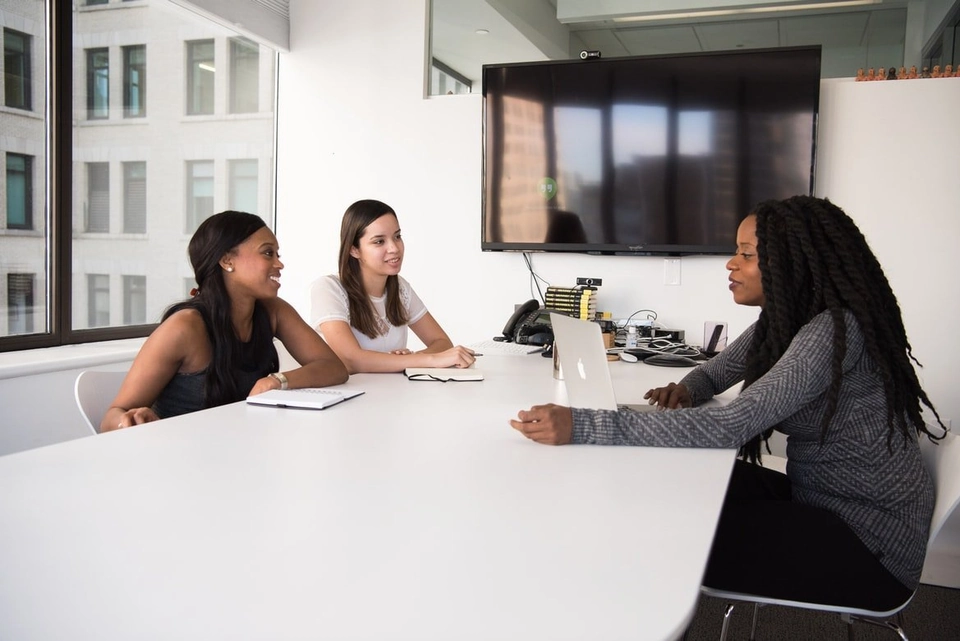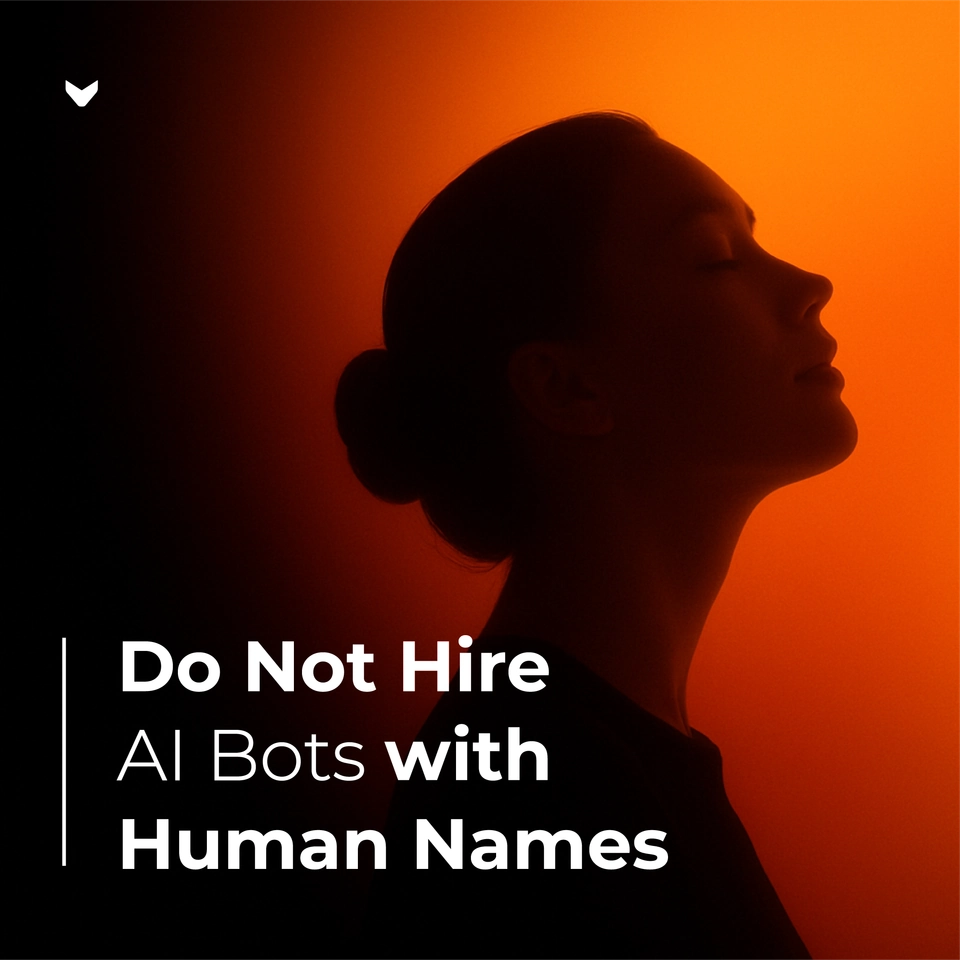- Cognitive biases and MeVitae’s blind recruiting solution
- Interviewer bias
- Interviewee biases:
- Order effects:
- How to de-bias interview
I’ve used blind recruiting, now how do I de-bias the interview?
Cognitive biases and MeVitae’s blind recruiting solution
Our brains are limited in their processing abilities and so when faced with excess information, we use heuristics, these are cognitive shortcuts that make decision-making easier for us. While these shortcuts significantly reduce the time it takes for us to make a decision, often these decisions are based on oversimplified assumptions and rules of thumb, also known as cognitive biases. During the hiring process, we are prone to many different cognitive biases, with most falling during the initial screening stage when hiring managers are faced with candidates’ CVs and cover letters. Unfortunately, this often means promising candidates are screened out based on superficial characteristics, such as age, ethnicity, and gender. MeVitae’s blind recruiting solution successfully tackles this issue, with organisations reporting an increase in the diversity of applicant talent pools, and a wider range of applicants passing the initial screening stage, with increases in ethnic and gender diversity of 30%.
However, what happens during the proceeding stages of the hiring process when the interviewer is actually faced with the candidate? Will they not still make these same assumptions (coming under the umbrella term ‘interviewer bias’)? While in part this argument would be correct, hope is not all lost: The majority of biases fall during the initial reviewing of CV’s and cover letters and so MeVitae’s blind recruiting solution enables a more diverse range of talent past the initial screening, having implications for every stage of the hiring process . Furthermore, unlike just the 6 seconds recruiters and hiring managers have to review CV’s and cover letters, the interviewer will have a substantially larger amount of time to form impressions. Therefore, the impressions formed will be based on the candidate’s competencies and abilities, challenging any initial biases that may be present, and this can be achieved via various ways set out in this article.
Interviewer bias
Before we go into how to de-bias the interview, let's consider what exactly interview bias is, and what this looks like. Interview bias refers to that bias that occurs when the interviewer judges a candidate on unspoken criteria. For instance, an interviewer may reject a candidate based on the simple fact that they did not have a ‘good handshake’ or didn’t have enough eye contact. There are over 140 biases that exist, but the most prominent during the interview are:
-
Stereotyping – Possibly the most obvious bias is stereotyping. This is the formation of an opinion based on the categorisation of a person, based on characteristics not predictive of performance, such as age, gender, or ethnicity [1]. Within moments of meeting someone, even the most well-intended employers will form impressions about who they are, and how they believe they will behave. In practice, this could look like believing that a woman with children will take lots of time out of work.
-
The generalising effect - Just as stereotyping can lead us to make predictions about future behaviour, we also have a tendency to generalise the behaviours we see in the interview into personality traits . For instance, it would be easy to assume that a candidate who presents themselves as nervous in an interview may be an anxious person. They could in-fact be a very confident worker, they just lack interview experience.
-
The Halo/Horn effect - The Halo effect describes our tendency to be influenced by positive impressions of a person – so viewing a physically attractive person as superior to others [2]. In one study it was found that attractive individuals were viewed as more powerful during their interview [3]. As you would expect, the Horn effect explains the opposite: the tendency to make a snap judgment about someone based on one negative trait.
-
Similarity-Attraction Bias - it is no surprise that we have a tendency to favour those similar to us. However, if we base hiring decisions on similarity then we may lose out on candidates with different backgrounds who could provide new, innovative ideas and perspectives [4]. Hiring those who are similar may also create a more exclusive work culture, leading to further problems.
-
Confirmation bias - Confirmation bias is the tendency to recall and favour information that confirms our pre-existing beliefs or hypotheses [5]. Blind recruiting prevents the hiring manager from forming prior opinions about the candidate. However, hiring managers may still disproportionately hold onto information disclosed in the interview that validates their initial impressions at the start.
-
Peak-End Rule - This cognitive bias impacts how we recall the interview. We tend to remember the most emotionally intensive parts of an experience, positive or negative, along with the end of the experience more so than any other part of it [6]. If a candidate disclosed particularly personal information during the interview we’re more likely to remember them.
Interviewee biases:
Likewise, in the evaluative setup that interviews pose, the interviewee is susceptible to producing different biases. For instance, the social desirability bias is the alteration of behaviour whereby a person presents themselves in a favourable way, as opposed to giving honest answers [7]. This could be either through adjusting stories provided to competency-based questions, or exaggerating past experiences. The social desirability bias is difficult to tackle because the interviewee will, understandably, try to present themselves in the best possible light in order to land the job. However, by acting in a way that differs substantially from regular behaviour, or by providing inaccurate responses, the candidate may risk receiving an offer for a job that they would not actually be the right fit for.

Order effects:
Interestingly, the order in which candidates are interviewed plays an important role in the formation of opinions of all interviewers. Here are some examples (which may make you think twice next time you get to choose your order presenting):
-
Decision fatigue: This describes our reduced ability to make decisions after prolonged sequences of decisions [8]. Subsequently, those candidates who are interviewed last are less likely to be judged to the same degree of accuracy as those who proceeded them.
-
Recency bias: However, while those who are interviewed last are less likely to be judged accurately, they are more likely to be remembered (similar to the peak-end rule), as our brains favour recent events over historic ones [9].
-
The contrast effect: This subconscious bias happens when two people are judged in comparison to one another, instead of being assessed individually [10]. An average candidate may be judged as significantly more competent than they actually are if they immediately followed a poor interview.
All of these biases are inherent: They are something that we all have, and these can be quite hard to address because we don’t realise when they are present. Sadly, no amount of unconscious bias training will change this. However, there are a few things we can do to reduce the negative affect during interviews:
How to de-bias interview
-
Digital interview - our partner Equitas provides a voice-led interview software that focuses on fair and inclusive hiring practice. By using these best practice interview methods, and capturing vital interview data, this modernized approach to hiring helps companies to become more representative of the communities they serve.
-
Have a wider and more diverse panel – having a larger panel adds more perspectives and reduces the chances of subconscious biases. Having a larger and more diverse panel encourages the team to think more broadly and inclusively about the interviewee, reducing the weight of the similarity-attraction bias.
-
Telephone interviews – We can still gauge certain characteristics during telephone interviews such as gender, and age. However, telephone interviews keep the interviewer blind to many characteristics and reduce the likelihood of focusing on these.
-
Train the interview panel beforehand – Subconscious biases are called “subconscious” for a reason: we’re unaware of these processes. No amount of training can eradicate our subconscious biases, but prior training will enable some awareness and, hopefully, hypervigilance to these.
-
Take notes as you go – As we have seen, there are many ways in which our memory can deceive us following an interview: the candidate who was exceptionally attractive, the candidate who disclosed personal information, and the candidate who went last are all advantaged. By taking notes as you go, or recording the interview, you reduce the chances of latching onto these variables and increase the chances of basing decisions on objective information.
-
Anonymous test assignments – if your interview typically involves an individual/team task, find a way to anonymise this, such as by assigning numbers to projects so that actual performance is judged without the projection of any preconceptions.
-
Reduce chit-chat – While casual conversations can ease the tension and calm the nerves of the interviewee, they can exacerbate bias. For instance, a candidate discussing their journey to the interview may reveal information about where they are from, and their socio-economic background.
-
Use a structured interview format, with standardised questions – Consistently, structured interviews have shown to be the best predictor of performance, with significantly less room for biases [11]. By asking candidates the same questions you ensure you get to know each person equally, with subsequent judgments then based on a level playing field.
** Author:** Emma Bluck (Marketing and Scientific Communications Lead)
Start Building a Fairer Workplace With Us
Dive into the future of work with our expertly crafted solutions. Experience firsthand how MeVitae’s AI-driven solutions can make a difference. Request a demo or consultation now.
